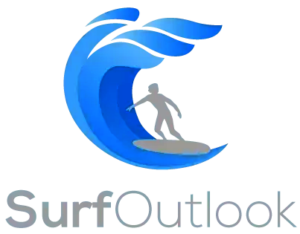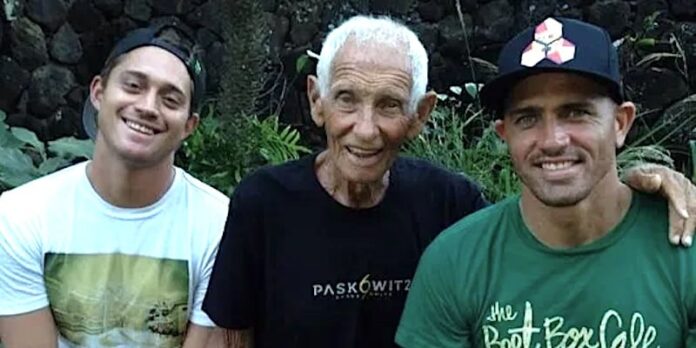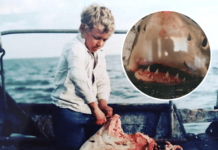
“For the bruised hearts of Lahina, moving on ain’t so simple.”
The West Maui fires are now sixty days past and most of us have moved on; the brain responds to novelty, after all, and each day’s headlines provides plenty of fresh panic.
So, I go for a stroll to see underground shaper Josh Weisfeld of JAW Surfboards. He’s known around the islands for his top-shelf customs and color-resin jobs.
We sit in the living room of the Kihei house he’s staying in since fire ripped through his Lahaina shop and home two months ago. He’s not wearing a shirt or shoes, only a pair of worn-out board shorts that fall off his hips. I assume it’s his only pair, but I’m too polite to ask.
As he starts to talk, I’m offered a variety of elixirs but decline, also too polite to go mute and drooling on the linoleum within twenty minutes of our conversation.
“The power went out around four in the morning cause the winds were howling at sixty miles per hour. Huge trees and branches fallin’ everywhere. Roofs popping off, big sheets of tin flying. I rolled to my shop to do some damage control, then back to my house.”
Josh arrived home to find the winds doing the same job to neighborhood roofs. He pulled on a mountain bike helmet, jumped on his roof to sink some screws; they were going down as fast as they were springing up.
He then went back inside to continue the day, not thinking much more about the weather. High winds commonly cause trouble in West Maui. There was of course, no way to know what was to come.
“Around 2:30, I’m in my house and heard a voice on my front lawn yelling, ‘Help, help, I need water. I just escaped from the nursing home.’ This old lady was freaking. I walked to the edge of my street and saw pure chaos. Black smoke, straight flames.”
He saw the smoke and the fire and the panic in his neighbor’s eyes as they raced in their cars down the street. Three previous West Maui fires within five years have made Lahaina residents jumpy. To make things worse, cell phone service was already knocked out, making it impossible to gather information about the fire’s movement.
After getting the old lady some water, Josh and his wife grabbed their important documents, two rabbits, two boards, and the three Ukrainian refugees living next door: a mother, a three-year-old daughter, and the grandmother.
“The mom barely spoke English. Tears were pushing out of her eyes. I banged on their door and said, ‘You don’t have a car. The fire’s coming. We got 5 minutes and I’m gonna come back over there and get you.’”
I’m inspired by Josh’s selflessness. It’s hero stuff.
As the carpool of Josh, wife, refugees and rabbits sped off, the sounds of exploding transformers and cars rocked the air.
“Apocalyptic,” he says.
Josh is still in disbelief over what he witnessed. He hikes up his shorts with his hands then animates a play of his neighborhood crumbling around them.
“We were tripping! I saw cars blow up, exploding like in a war and big, hundred-year-old pine trees literally bursting in the middle from the heat. All the way out of town, it sounded like machine gun fire.”
As they drove, reality struck. “There’s no cell service, the wind is still blowing so hard against the van that I’ve got to yell everything I say while trying to keep everyone calm. I’m in charge of all these people and I realize a whole ‘nother level of responsibility has to kick in.”
That night, they moved around West Maui three times, each time thinking they were out of harm’s reach, each time being forced to retreat.
“Everything was orange that night. I thought the whole island was on fire,” Josh says.
And while his caravan sped inland, others were not as fortunate. Dozens of people found themselves out of real estate and were pushed directly into the water by the flames, forced to jump over the Lahaina Harbor break wall and bob into the night.
The U.S. Coast Guard deployed a 154ft Fast Response Cutter from Honolulu and a 45ft response boat crew (two crew members are born-and-bred Lahaina boys) from Station Maui. Two U.S. navy aircrews were also put into action.
Upon arrival, they located and plucked seventeen swimmers from the water. Another forty were helped onshore. The next morning, further search and rescue attempts were put on hold as the winds and smoke made efforts impossible.
A 418-foot Coast Guard National Security Cutter was put offshore to further support search efforts. The Coast Guard with seven assets (two air, five water) and Navy (two air) along with county & state agency partners and their assets searched the waters in the Maui Triangle—all the way to Lanai & Molokai— for a straight seventy-two hours after the fires.
The Maui Fire Department with County Ocean Safety and State Dept of Land & Natural Resource personnel performed underwater dive operations with US Navy salvage divers throughout the Lahaina area a few weeks after the fire.
Their report has yet to come out to the public, but inside sources say none deceased were found in the water.
On land, the latest reports claim that ninety-seven residents of Lahaina perished that day. This, along with figures of gross destruction of properties: 2,200 acres burned and the same number of structures, homes, and businesses. 6,000 residents displaced.
Projections of four-to-six billion dollars in damages are conservative, predicts Moody’s Analytics.
Many business owners in Lahaina aren’t sure what to make of the aftermath. Jennifer Li, owner of Goin’ Left Surf Shop, the footprint of which still sits just off Font Street, recalls:
“On Wednesday night (before the National Guard blocked access to Lahaina) we drove down close to my shop.
The town was pitch dark, but still burning, and my anxiety was high,” she says.
Jennifer was too nervous to see her store firsthand.
“I had my friend walk down to my shop for me from the highway. When he returned, he told me the news, that it was completely burned down and still burning. I wept the rest of the night, not just for my shop, but for our sweet little town that was changed forever. Early Thursday morning, we went back. I needed to see it with my own eyes. Everything, except for a few structures, was completely destroyed. I now knew what everyone meant on Wednesday morning when they said, ‘Gone.’”
Li is uncertain what to do now. Like Josh, the insurance she had on her biz ain’t nearly enough to recoup her losses. She doesn’t know if she’ll be able to rebuild. She doesn’t know who will be available to work in her shop.
Many have been forced to leave the islands for the mainland in search of employment. And what of the inventory supply? The delivery folk? The gas stations that provide the gas to the delivery trucks? It’s a webby mess. (Check out the essay “I, Pencil” if you wanna see the economic connectedness of it all.)
Li is, however, thankful of all of the support she and the people of Lahaina are receiving. Countless organizations are invested in propping up the community.
There’s Pastele House Maui, who provided free meals for thirty-five days straight. “All these people lost everything,” says Devin, the owner. We have our business. We can cook, and people out here need food.”
There’s Goodfellow Construction Co., which is faithfully taking care of the historic Banyan Tree, a symbol of hope for Lahaina residents.
Hope Chapel in Kihei opened their church as a major distribution center for the displaced. Daily, the parking lot is filled, people coming to get supplies. I toured the facility and was overwhelmed with the amount of goods available. Pallets of Cheerios, endless boxes of toothpaste, soap and toilet paper.
I even spied a pair of cowboy boots, which, in naked honesty, I thought about taking, picturing myself walking across the sand, fingers pointed in pistol position. Howdy, howdy, howdy!
Shocked by my lack of conscience, I put my eyes back to the piles of blankets and baby clothes. It’s great stuff they are doing. Thoughts and prayers work when hands do.
Albee Layer created the fundraiser freshhelpmaui.org with a goal of getting a grand to 200 families for Xmas. He did one event a few weeks back, raised over forty grand and people are still donating.
And there’s ol’ Ian Walsh, always doing his part. You’ve likely heard of Ian’s board donation program, boards4buddies.com, which helps put planks back in the hands of those who lost them in the fire.
We see this pattern of surfers helping surfers throughout Maui. A ‘loving our crooked neighbors with our crooked hearts’ type of understanding.
But this kind of support can’t last forever and rebuilding is a must. There is concern from residents and business owners alike that things will not be put back as they were. Disaster capitalism, vulture realtors and the like have already surfaced their green heads.
In response, Mayor Richard Bisson has created a Rebuild Lahaina Advisory Council. Members include Kim Ball, owner of the Hi-Tech Surf Shop chain and Archie Kalepa, renowned big wave surfer. Kalepa, a ninth-generation Hawaiian, is sure to ease some of the concern over fair reconstruction practices.
Breaks are also beginning to open, too, thanks to some heft by locals. The area has been the practice field of so many elites: Eli Hanneman, Imai, Devault, Clay Marzo, Dusty Payne, Tanner Hendrickson, Kai Barger, Granger Larson. It’s a full roster. The breaks represent a history to the community, a source of Hawaiian pride.
But some breaks remain closed. The State has yet to release any information regarding ocean water quality.
While the Coast Guard placed a barrier around the Lahaina harbor to prevent oil, toxins, and ash from escaping into the ocean, the fire’s leftovers from elsewhere could be seeping into the breaks.
And the number of boats sunk in the Harbor have made some spots off limits. It’s expected to take months to remove the wrecks, as it’s a tricky task to remove the vessels without damaging the reef.
Popular spots including Shark Pit and Shark Pit rights, Breakwall, Lahaina Harbor, and Mala are closed. It’s crowding the other surf spots like Laperouz, Dumps, and Olowalu; even Maalaea, that normally no one surfs when its below chest high, is hosting bunches of people wanting to wash off the trauma.
Somehow, I’ve always been shy on the notion that surfing heals. I’m careful to avoid sentimentality and careful not to miscast the ocean as some soppy metaphor for salvation. Life is what it is and riding waves is no shortcut to health or happiness. It can, however, provide momentary escape, a temporary shelter, a kind of peace.
As artist AJ Dungo says, loss often leaves us alone “with only water to comfort.”
Josh, however, isn’t surfing much. Aside from his wife’s two small boards, he’s without a ride.
“I lost my tools, my templates, and all my boards. I basically lost all my savings and retirement in my board collection.”
His 401K included over a hundred beauties including two original Lis fishes, a Bolt from the seventies, a Reyner spoon, an original Gordon and Smith vee-bottom from ‘63, and a Stussy-shaped Brotherhood from ’72. He figures the boards added up to maybe a couple hundred grand. With all the heaviness of the last two months, Josh is feeling surprisingly light about the open road.
“Before the fire, I didn’t realize how all my stuff was weighing me down.And I just bought a box truck. I’m gonna wire it up and in three days I can start shaping anywhere, on the beach if I want.”
It’s a unique idea. We laugh as our minds are furnished with an army of well-heeled west coast kooks wanting to purchase one, pre-outfitted. (Josh’ll do the work if you are interested.)
The rabbit bouncing across my foot wakes me up to the reality of what Josh is facing. We talk about his future measured in days, not years. And everything is so uncertain that I don’t really know what to say when I leave, knowing I can go home, to my own living room, mute and drooling.
If you are interested in sporting a buck or a board for the people of Lahaina, KITV News 4 has a reliable list of places taking donations. And Kai Lenny throws out good info on his Instagram. Kelly does, too, assuming you’re not blocked.
If you wanna fine-tuned instrument from JAW Surfboards, give Josh a shout HERE.
If you’d like to throw a bone to Jennifer at Goin’ Left, she’s raffling off a longboard and a fish shaped locally.





